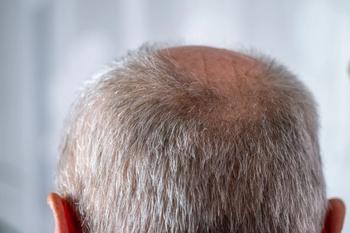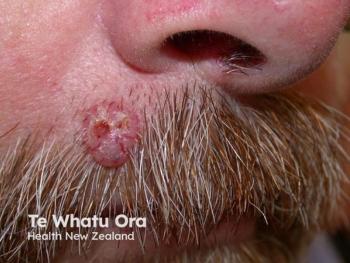
JAAD Study Validates Avava’s Precision Laser Innovation
Key Takeaways
- Avava's Focal Point Technology delivers precise energy to skin depths, reducing risks for darker skin tones compared to traditional lasers.
- The technology promotes skin rejuvenation by stimulating collagen and elastin production through controlled coagulation zones beneath the skin.
Physicians can customize treatment depth and intensity with Avava’s system, improving results for various skin concerns.
A recent peer-reviewed study published in the Journal of the American Academy of Dermatology (JAAD) has spotlighted Avava’s Focal Point Technology as a significant innovation in energy-based skin treatment. The technology—designed to deliver targeted energy to specific skin depths—may offer safer, more effective treatment options for a broad range of patients, including those with darker skin tones who have traditionally faced greater risk from conventional laser therapies.1
Precision Energy Delivery and Controlled Coagulation
Focal Point Technology distinguishes itself by enabling clinicians to deliver energy with remarkable accuracy, reaching depths of up to 2 millimeters beneath the skin surface. According to the JAAD study, this capability allows for treatment of various dermatologic conditions while preserving the outermost skin layers.2 At the core of this technology is a ring-shaped laser beam that delivers energy through a specially designed treatment window, ComfortCool, which cools the skin during the procedure to enhance patient comfort and reduce surface-level damage.
The study outlines how this focused approach stimulates the skin’s natural regenerative processes by creating controlled zones of coagulation beneath the surface. This initiates the production of collagen and elastin—2 proteins critical to skin structure and elasticity—ultimately promoting skin rejuvenation from within. The reduction in surface trauma also correlates with shortened recovery periods, which may increase accessibility for patients seeking minimally disruptive aesthetic treatments.
Inclusivity in Dermatologic Care
A notable benefit emphasized in the research is the suitability of Focal Point Technology for all skin tones. Traditional lasers have often posed higher risks of hyperpigmentation and scarring for individuals with darker skin, limiting their treatment options. By minimizing heat at the epidermis and focusing energy beneath the surface, Avava’s approach reduces these risks.
R. Rox Anderson, MD, FAAD, a noted laser expert and Avava board member, commented on the significance of the advancement in a news release stating, “For years, patients with darker skin tones have faced limited options due to the risks associated with traditional lasers. Avava changes that equation, opening new doors for new treatments while allowing physicians to treat all skin fearlessly.”
Integration with Digital Tools for Enhanced Care
In addition to its laser innovation, Avava has introduced AvavaSync, a proprietary digital platform that integrates device control, treatment tracking, and practice management. This system provides clinicians with real-time data and streamlined workflows, potentially improving both procedural accuracy and operational efficiency. By connecting the treatment process from consultation to execution, AvavaSync supports personalized care plans that can be adapted based on patient response and preferences.
Clinical and Practical Implications
From a clinical standpoint, Avava’s technology may provide clinicians with greater flexibility to tailor treatments based on individual patient needs. The system allows customization of energy intensity, treatment depth, and density, enabling practitioners to address a variety of skin conditions such as laxity, texture irregularities, and signs of aging.
Patients, in turn, benefit from a less invasive experience with minimal downtime and visible results that emerge as the skin naturally regenerates. This balance of efficacy and safety could shift patient expectations and broaden the appeal of aesthetic procedures to new demographics.
Conclusion
While long-term outcomes and broader clinical adoption will further clarify its impact, the early evidence suggests that Avava’s Focal Point Technology represents a meaningful advance in dermatologic care. Its capacity to treat diverse skin tones with precision, combined with a supportive digital ecosystem, positions it as a promising tool in modern aesthetic medicine. Further studies and real-world applications will determine the full extent of its benefits across patient populations.
References
- JAAD publishes study on AVAVA’s focal point technology, A breakthrough in laser treatments for all skin tones. News Release. Globe Newswire. Published April 9, 2025. Accessed April 9, 2025.
https://www.globenewswire.com/news-release/2025/04/09/3058665/0/en/JAAD-Publishes-Study-on-AVAVA-s-Focal-Point-Technology-A-Breakthrough-in-Laser-Treatments-for-All-Skin-Tones.html - Manstein D, Chan HH, Bhawalkar J, et al. Focal point technology: Controlling treatment depth and pattern of skin injury by a novel highly focused laser. J Am Acad Dermatol. 2025;92(1):78-84. doi:10.1016/j.jaad.2024.09.004
Newsletter
Like what you’re reading? Subscribe to Dermatology Times for weekly updates on therapies, innovations, and real-world practice tips.


















